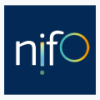
On 24 June, the European Commission through NIFO organised a webinar on the implementation of the European Interoperability Framework (EIF) and the novelties introduced by the Interoperable Europe Act (IEA). The webinar, which was attended by more than 50 participants, focused on presenting the results of the 2023 EIF Monitoring Mechanism (EIF MM), and the new interoperability monitoring mechanism outlined under Article 20 of the IEA. Additionally, Czechia had the opportunity to present national good practices related to EIF's Principle 12 on the Assessment of Effectiveness and Efficiency.
EIF Monitoring Mechanism: overview and 2023 results
During the webinar, the NIFO team kicked off by providing an overview of the EIF, a commonly agreed approach to deliver European public services in an interoperable manner, along with its monitoring mechanism, which provides participating countries with their level of implementation. The monitoring mechanism is based on four scoreboards, focusing on interoperability principles, interoperability layers, the conceptual model, and the cross-border dimension of interoperability.
Results at the EU level for the 2023 data collection indicate overall good performance across all elements of all scoreboards, with most reaching the maximum level of four. However, there is still room for improvement, namely for Principle 1 (Subsidiarity and Proportionality), Principle 7 (Inclusion and Accessibility), and Principle 9 (Multilingualism), as well as Security and Privacy and Catalogues. In the cross-border dimension, the mentioned elements – Principles 7, 9, and 10, along with Security and Privacy – continue to represent opportunities for further enhancement in cross-border interoperability.
Exchange of good practices with Czechia on Principle 12
Czechia was invited to share its advancements regarding Principle 12, which focuses on the assessment of effectiveness and efficiency. This principle mandates the evaluation of technological solutions, considering factors such as flexibility, administrative burden reduction, transparency, and simplification.
Alena Klímová (Digital and Information Agency) and Jakub Janura (Ministry of the Interior) highlighted challenges and opportunities in interoperability governance. These include balancing different administration levels, promoting good practices across sectors to enrich the bureaucratic mindset, and leveraging NIFO monitoring findings.
In the Czech public administration architecture, Principle 12 is implemented through various instruments and bodies, including:
-
Legislation mandating the evaluation of digital solutions' adaptability to their intended problems;
-
The Digital Czechia Programme, coordinated by the Government Council for Information Society; and
-
The Chief Architect of eGovernment at the Digital and Information Agency (DIA).
In 2022, DIA, along with the Ministry of Finance, the Ministry of Interior, the Ministry for Regional Development, and the Cabinet of the Deputy Prime Ministry for Digitalisation at the Office of the Government, issued the “Manual for ICT professionals, auditors and controllers”. This manual provides guidelines for digitalising public administration in line with the objectives and principles of the Czech eGovernment priorities. It addresses the basic rules and principles of the long-term ICT management, data sharing and re-use, public administration service channels, and national cloud services.
Additionally, two initiatives from the Ministry of Interior were presented to illustrate projects aligned with Principle 12:
-
The Unified Information System of Data Collection: This initiative aims to strengthen data-driven decision-making and reduce administrative burden; and
-
Geolocation Data from Mobile Phone Operators: This project uses geolocation data to adjust state administrative units according to natural mobility patterns of the population, bringing public services closer to citizens.
Towards a new monitoring mechanism: IEA novelties
For the last part of the webinar, Claudia Oliveira (DG DIGIT) introduced the Interoperable Europe Act (IEA) and explained the novelties it brings in terms of monitoring. The IEA aims to help EU and Member States’ administrations deliver connected digital services to citizens and businesses across Europe. It is part of a broader EU digital legislation landscape, contributing, for instance, to the overarching Digital Decade policy programme.
Article 20 of the IEA mandates the Commission to monitor the progress of the development of trans-European digital public services to support evidence-based policymaking. This provision has resulted in the creation of a new monitoring mechanism that differs from the previous one by focusing on different levels of government within countries and EU entities, rather than the national level only. Additionally, it goes beyond the EIF by including topics such as GovTech, public sector innovation, and public sector skills related to interoperability. The new monitoring mechanism is the result of a co-creation process involving the Joint Research Centre (JRC), and various stakeholders and experts at national and EU levels.
At the end of the event, participants had the opportunity to share their thoughts, ask questions, and provide feedback. The presentation shared during the webinar is available below.

